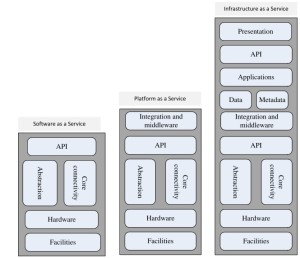Availability of service; what happens when the service provider
cannot deliver?
• Diversity of services, data organization, user interfaces available
at different service providers limit user mobility; once a customer is
hooked to one provider it is hard to move to another.
Standardization efforts at NIST!
• Data confidentiality and auditability, a serious problem.
• Data transfer bottleneck; many applications are data-intensive .
Performance unpredictability, one of the consequences of resource
sharing.
– How to use resource virtualization and performance isolation for QoS
guarantees?
– How to support elasticity, the ability to scale up and down quickly?
• Resource management; are self-organization and self-management
the solution?
• Security and confidentiality; major concern.
• Addressing these challenges provides good research
opportunities!!

